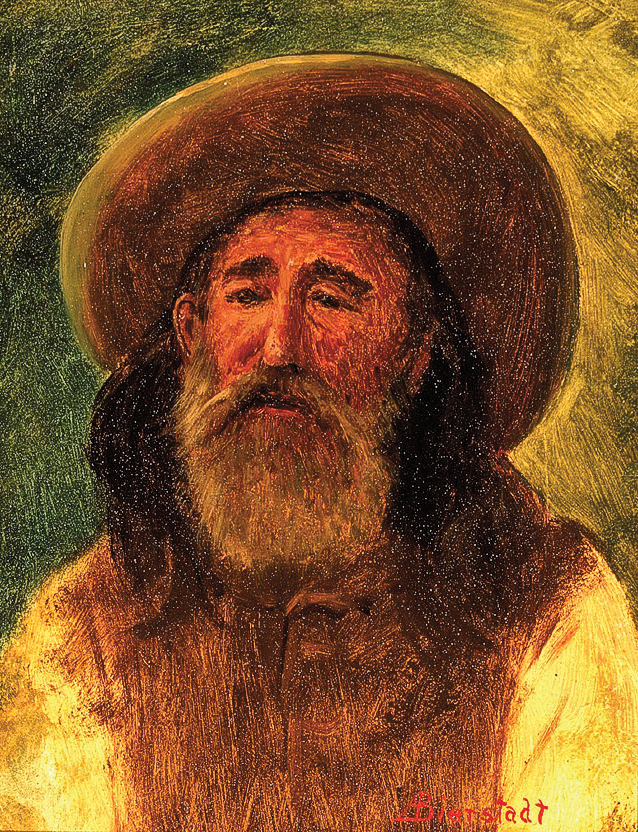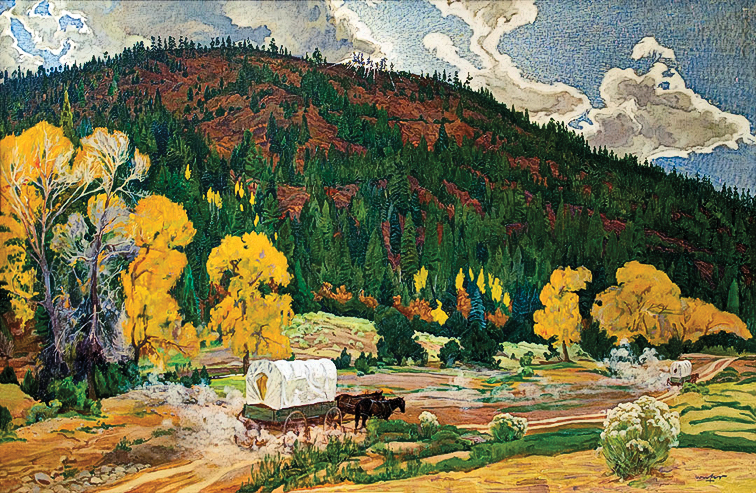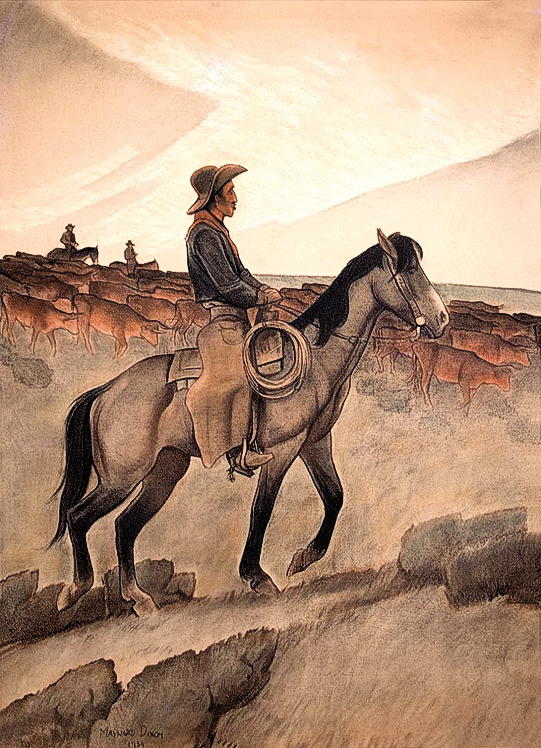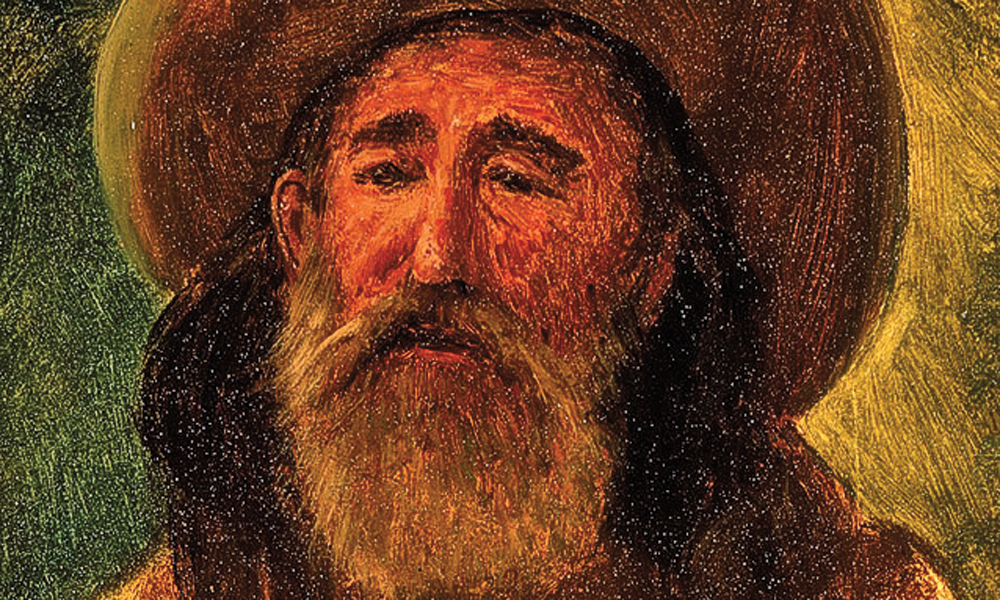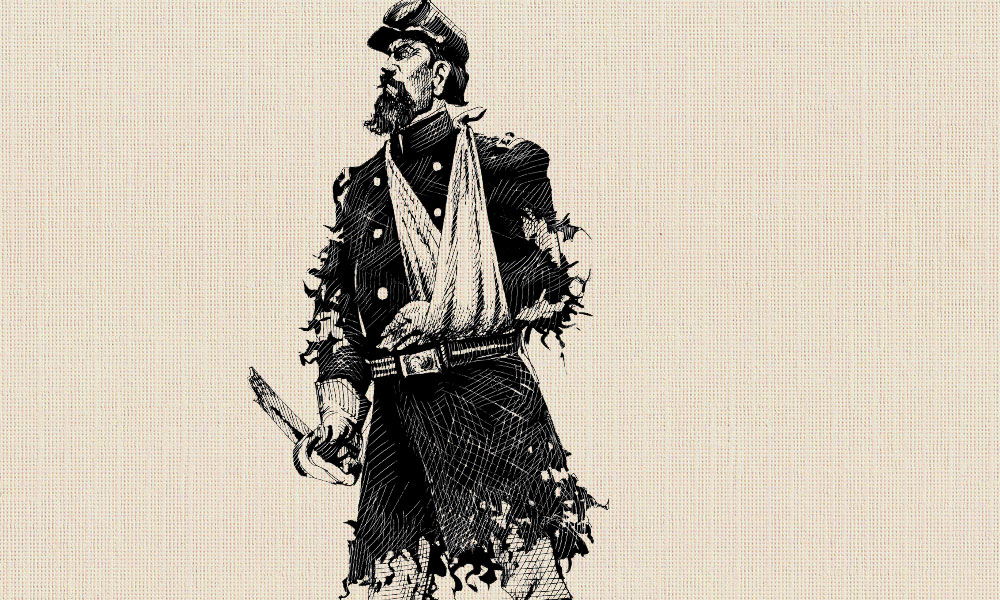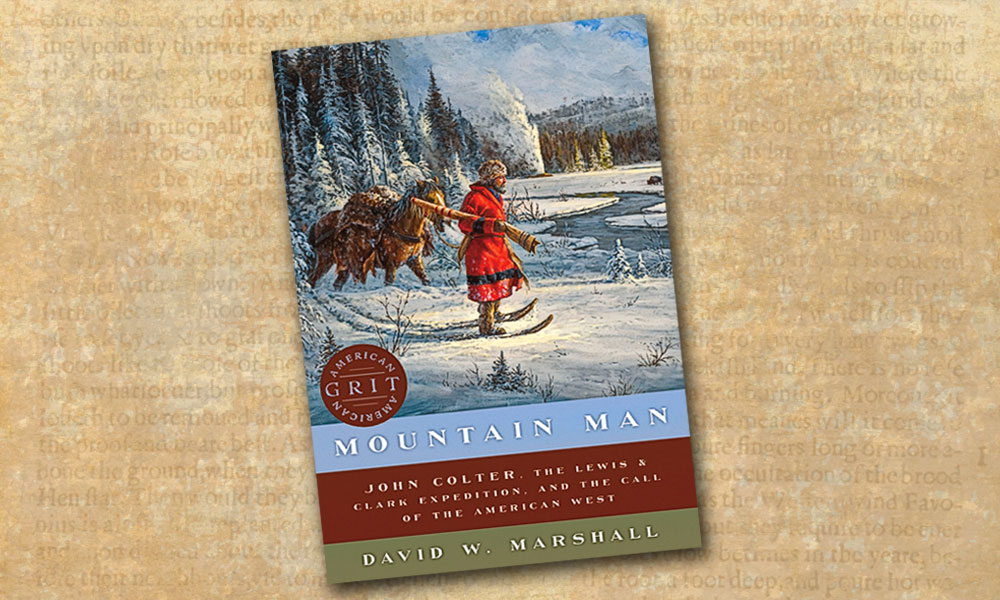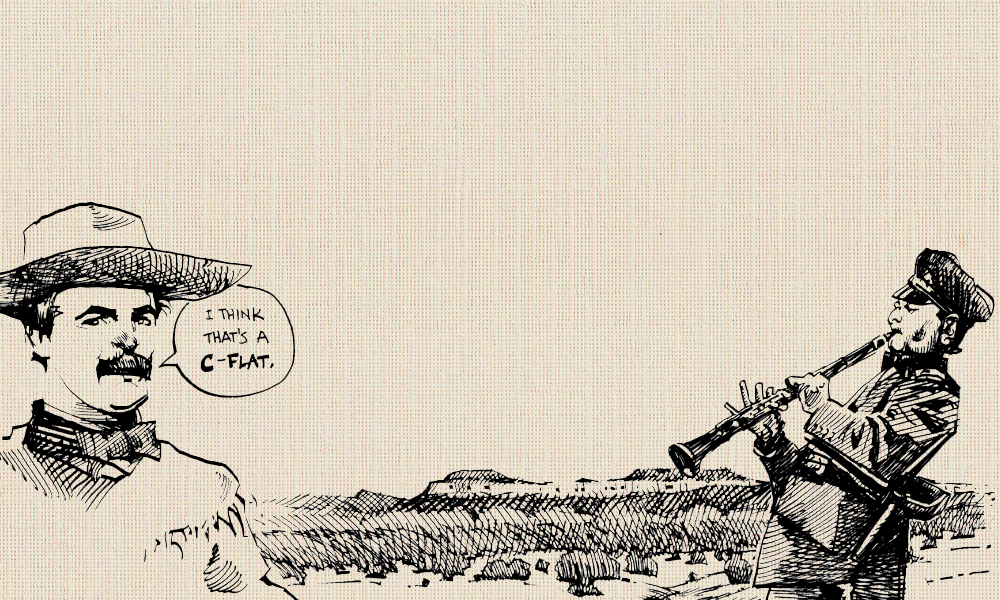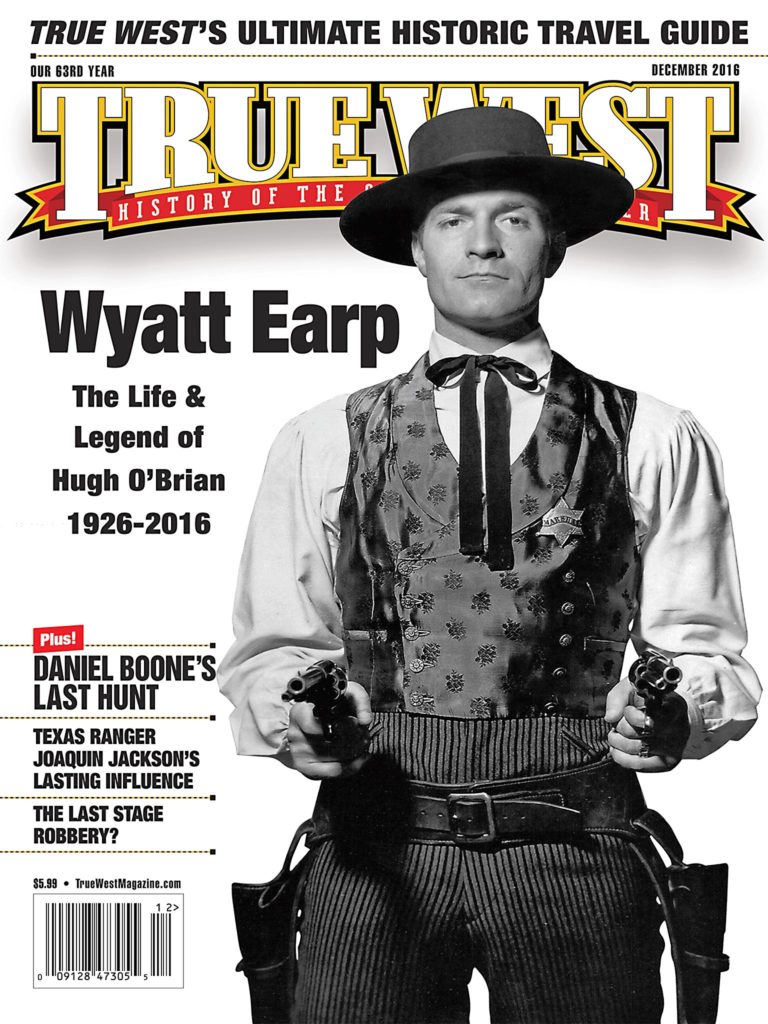
Albert Bierstadt legitimized the Western American landscape as a serious subject, first bringing to the East and the world the majestic perpendicular granite peaks of the Rocky Mountains. Many would be surprised to learn the artist, far more prolific in his landscape art, also painted about a dozen portraits. One, credited as being a portrait of mountain man Jim Bridger, hit the auction block at Jackson Hole Art Auction on September 17, 2016. Collectors bid more than $1.7 million for Western artworks sold at the auction in Jackson Hole, Wyoming.
The Bierstadt portrait “most likely dates to 1859 during the artist’s first trip west,” Melissa Webster Speidel, director of the Albert Bierstadt Catalogue Raisonné Project, states in the auction catalogue. She adds, “During the trip, Bierstadt painted the portrait of a scout who is thought to be Jim Bridger.”
Although Bierstadt and Bridger certainly could have crossed paths before the Mountain Man died in 1881, the idea that Bierstadt met Bridger during his 1859 sketching tour, as an artist for Frederick W. Lander’s expedition, is unlikely.
Both were out West that year, but the Lander party explored the Rocky Mountain region, while Bridger served as a guide for Capt. W.F. Raynolds’ expedition of the region that would become Yellowstone National Park. If the artist met Bridger in 1859, the most likely scenario would be during his weeks in April in St. Joseph, Missouri, before the expedition departed on May 5. Bridger also left for his trip from St. Joseph, although later, on May 28. But perhaps he was in the area, after Raynolds got his orders on April 13.
Bierstadt did meet Rocky Mountain trappers, with sketches from the 1859 trip informing works that include his 1861 oil The Trappers’ Camp. And he did focus on the people he came across, taking stereographs of them, including, reportedly, one of a trapper, and sketching them. “For a figure-painter, there is an abundance of fine subjects. The manners and customs of the Indians are still as they were hundreds of years ago, and now is the time to paint them, for they are rapidly passing away, and soon will be known only in history,” he wrote, in a July 10, 1859, letter.
Another opportunity Bierstadt may have had to meet Bridger was in 1863, when he set out on a Rocky Mountain journey to California. Bridger was guiding Lt. Col. William Oliver Collins in the area of present-day Wyoming’s Fort Laramie that year, before September, when he set off to take Capt. Jacob Humfreville to South Park, Colorado Territory, wintering with him at Fort Laramie.
Bierstadt left on May 12 and was in San Francisco, California, by July 17. Although he could have met the Mountain Man somewhere in between, the scenario proves more unlikely when you consider his traveling partner. Journalist Fitz Hugh Ludlow wrote a book, The Heart of the Continent, inspired by his journey with Bierstadt; he mentions Bridger as the man behind Bridger’s Pass, but does not state that he ever met him.
Without provenance documenting the artist ever met the Mountain Man, Bierstadt may have drawn the portrait based on the Rocky Mountain trappers he came across in his travels. In any case, the portrait remains a rare portrayal by an artist more famous for his awe-inspiring landscapes.
UPCOMING AUCTIONS
December 2-4, 2016
Historic Firearms
Rock Island Auction Company
(Rock Island, IL)
RockIslandAuction.com • 800-238-8022
December 5, 2016
American Indian Art
Bonhams (San Francisco, CA)
Bonhams.com • 415-503-3550
December 10-11, 2016
Arms & Armor and Civil War & Militaria
Heritage Auctions (Dallas, TX)
HA.com • 877-437-4824
Notable Art Lots Included
(All images courtesy Jackson Hole Art Auction)
